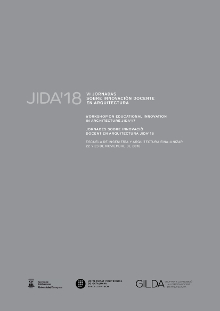Yes, we draw! The role of drawing in contemporary Architecture teaching
DOI:
https://doi.org/10.5821/jida.2018.5469Abstract
The drawing has traditionally played a fundamental role in architecture. However, in recent decades, it is disappearing from the curriculum of many schools of architecture throughout the world. This text aims to add value to the drawing as a essential tool of expression, creation, and architectural criticism, that substantiates the design education, especially in the early stages of the degree. For that purpose, we will explain the experience developed at Woodbury University (Los Angeles, CA), where we integrated our graphical methodology based on the drawing, with the teaching experience of the Design Studio Unit throughout the year. The result has been extremely fruitful, and has produce a great enrichment and mutual learning. Throughout the article we analyze the results and find a series of conclusions in order to verify the initial hypotheses in relation to the importance of the drawing in the teaching and the practice of architecture.
References
ALLEN, L., PEARSON, L. (2016). Drawing futures: Speculations in contemporary drawing for art and architecture. London: UCL Press, University College London.
BELLARDI, P. (2014). Why architects still draw. Two lectures on architectural drawing. Cambridge: The MIT Press
BERGER, J. (2000). Modos de ver. Barcelona: Gustavo Gili.
BERGER, J. (2011). Sobre el Dibujo. Barcelona: Gustavo Gili.
EISENMAN, P. (1999) Diagram Diaries. London: Thames & H.
EISENMAN, P. (1989) Recent Projects. The Netherlands: Sun Publishers.
RAPOSO, J. (2014). “Dibujar, Proyectar, Comunicar: El proyectar arquitectónico como origen de un proceso gráfico plástico†en Revista EGA, nº 24, p 92-105.
RAPOSO, F. J., BUTRAGUEÑO, B., SALGADO, M. A. (2013). Dibujar, Analizar, Proyectar. Colección Dibujo, Proyecto y Arquitectura, CDPA-7, ETSAM. Madrid: Arcadia Mediática
TSCHUMI, B. (1995). Manhattan Transcripts. London: Academy Editions.
VYZOVITI, S. (2016). Folding Architecture. Spatial, Structural and organizational Diagrams. Amsterdam: BIS Publishers.



















